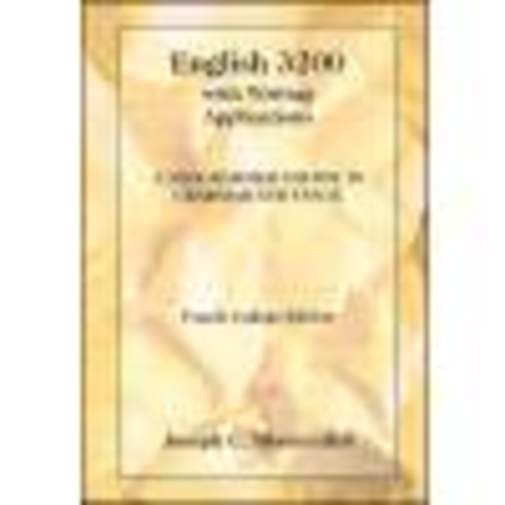We use cookies to make your experience better. To comply with the new e-Privacy directive, we need to ask for your consent to set the cookies. Learn more.
English 3200 Text with Writing Applications: A Programmed Course in Grammar and Usage
These materials offer a complete and comprehensive coverage of all three elements - grammar (i.e. parts of speech, complete sentences), usage (i.e. homophones, figures of speech, proper word choice to convey meaning), and mechanics (i.e. punctuation, capitalization).
Designed for high school and college students, this program is ideal for parents looking for a complete, upper-level grammar course that students can use independently. This series is a programmed course covering grammar, usage, and mechanics, and if you are unfamiliar with the term "programmed" course, read on to learn about how it works and why it is so beneficial.
In a programmed course, the material is carefully broken down and organized into small steps called "frames." Each frame presents a bit of information along with just one simple question to be answered through thinking and writing a short response. As students continue through the frames, they are able to learn the concepts based on the logical progression of the questions they are answering. They learn by working through the concept step-by-step in a concentrated way rather than simply reading a series of rules and trying to apply it to an exercise. Rather than separating the teaching from the exercises, a programmed course unites them together in the series of simple frames. The frames are divided into units (approximately 12 per book) and even further into chapters. The format of the book varies greatly from other grammar courses. Each page is a series of alternating gray and white bands. To work through the units and chapters in order, students simple follow the same band all the way through the book. For example, they begin with the frame that is the top gray band on the right hand page. Once they answer the question, they immediately flip the page to view the gray band at the top of the next right hand page. The correct answer to the previous frame is given along with the next question. In this way students immediately learn whether they answered the questions correctly instead of having to wait to check their comprehension. If they've answered wrongly they can instantly see their error and learn from their mistake before answering the next frame, and if they've answered correctly they will have immediate positive reinforcement. Then they can answer the question in this frame and continue through the pages, answering a short question, checking their answer, and moving forward. When they reach the end of the book, they simply turn back to the beginning, move down to the second band (now a white one), and continue on as before.
Since some of the material is likely to be review, students will move quickly through those frames without having to spend a lot of time answering endless questions. This will free up their school time for other more useful pursuits. When they reach an unfamiliar chapter, they can progress at a slower rate to absorb the new information. Each course should easily be completed in one semester, but the immense flexibility allows teachers to decide how much time and how many days each week students will spend working through the book (though the books recommend around a half hour per sitting and at least a couple of times a week). Because each student can set their own pace, this course can easily be used with one student or a whole group of students. The teacher simply needs to be available for questions and administer the tests when the students reach a new unit. There are two tests given for each unit, which gives the teacher a couple of options. You may choose to give one test before the unit and one after it's completed, or you could use one test as a warm-up or a second-try in case the student needs to review the material again. Please note that Level 3200 has two different test books - the original and an alternate. The alternate is formatted just like the original with the same number of each type of questions for each test, but the questions themselves are different. If you are using the book with multiple students, you may choose to give different tests between the students. Otherwise you would only need both books if you want to use the book a second time with the same student - say maybe in 10th grade and again at 12th - and want to give them different tests.
Each level is similar in format and approach, but they vary in content. The numbers with each level indicate the approximate number of frames per book. Level 2200 introduces students to the different parts of speech, constructing sentences, and punctuation and capitalization. Level 2600 expands on the earlier level by teaching more about modifiers, subject/verb agreement, punctuation, and how the different parts of speech function. Level 3200 continues by moving beyond the simple sentence to complex and compound sentences as well as more advanced work with various parts of speech and punctuation. All three levels feature a writing application section in the back that correlates to the specific units and helps students apply the information to their own writing by completing a variety of short writing exercises. All books are softcover. The texts are handbook sized and range between 400-500 pages. The test booklets are standard size and 60 pages, and the test answer keys are handbook sized. - Melissa
| Product Format: | Softcover Book |
|---|---|
| Brand: | Heinle & Heinle |
| Author: | Joseph C. Blumenthal |
| Grade: | AD |
| ISBN: | 9780155008656 |
| Length in Inches: | 9.25 |
| Width in Inches: | 6.5 |
| Height in Inches: | 1 |
| Weight in Pounds: | 1.7 |

